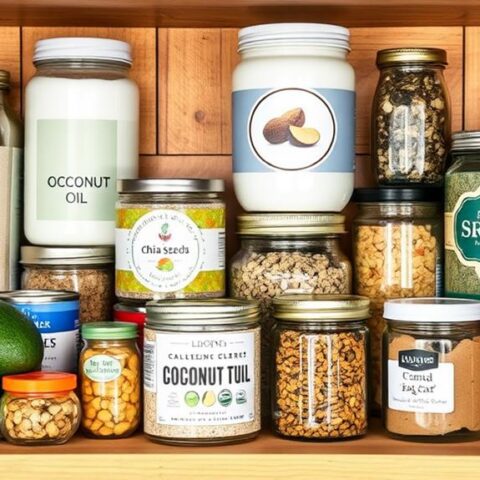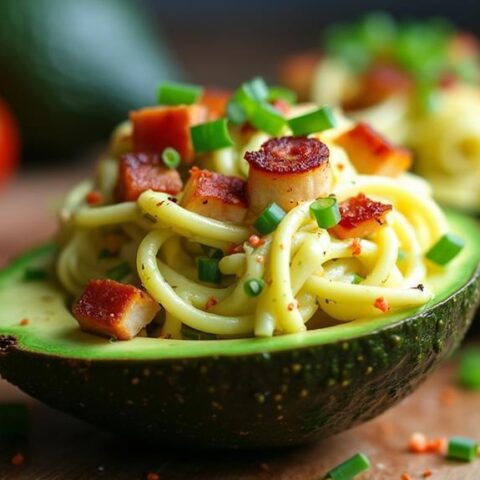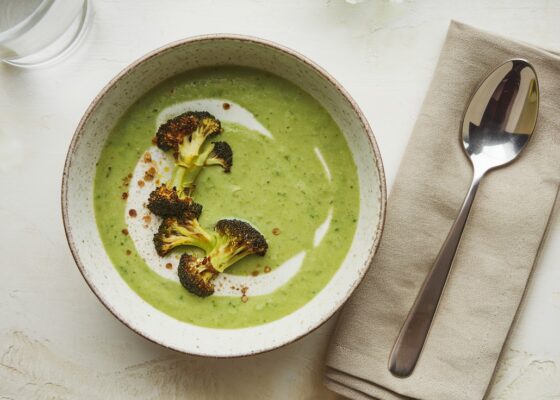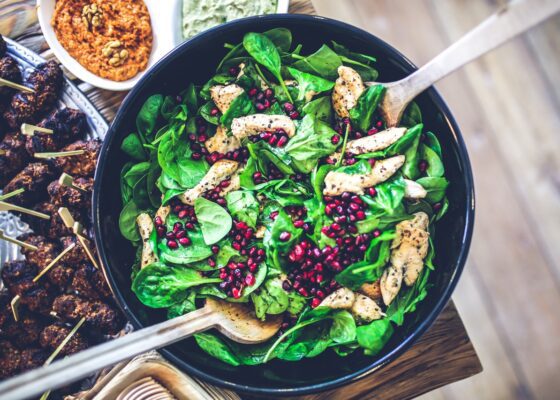
A successful low-carb vegetarian diet requires strategic food choices and careful planning. Protein-rich foods like tofu, tempeh, and seitan form the foundation, while smart substitutions such as cauliflower rice and lettuce wraps replace high-carb staples. Incorporating diverse low-carb vegetables, nuts, and seeds guarantees adequate nutrition, while tracking macros helps maintain carbohydrate goals. Proper supplementation, especially vitamin B12, supports long-term health. Understanding these fundamentals opens the door to sustainable low-carb vegetarian living.
Key Takeaways
- Replace rice and bread with cauliflower rice and lettuce wraps to drastically reduce daily carbohydrate intake.
- Focus on high-protein vegetarian foods like tofu, tempeh, and seitan while incorporating low-carb vegetables and healthy fats.
- Track your nutrient intake using apps to ensure you're meeting protein requirements while staying within carbohydrate limits.
- Include dairy products like full-fat yogurt and cheese if you're lacto-vegetarian for additional protein sources.
- Prepare meals in advance and keep low-carb snacks like nuts readily available to maintain dietary adherence.
Understanding the Basics of Low-Carb Vegetarian Eating
While adopting a low-carb vegetarian diet may seem challenging at first, understanding its fundamental principles makes the shift smoother and more sustainable.
The key lies in replacing high-carb foods with nutrient-dense, low-carb alternatives while maintaining adequate protein intake through vegetarian sources.
Essential Protein Sources for Vegetarian Low-Carb Diets
Protein stands as the cornerstone of any well-planned low-carb vegetarian diet, requiring careful consideration and strategic food choices.
Essential protein sources for vegetarian low-carb diets include tofu, tempeh, and seitan, offering substantial protein content with minimal carbohydrates. Tofu provides 8.92g of protein per 100g, while tempeh and seitan deliver even higher amounts at 20.29g and 19.05g respectively.
Nuts and seeds serve as excellent complementary protein sources, with options like walnuts providing both protein and healthy fats.
While legumes contain more carbohydrates, they can be incorporated strategically into low-carb recipes. For peak nutrition, combining different plant-based proteins ensures a complete amino acid profile, and including low-carb dairy options like full-fat yogurt and cheese can further enhance protein intake for lacto-vegetarians.
Low-carb vegetables(spinach, zucchini, cauliflower) are emphasized to maintain fiber intake while limiting carbs, which is essential for sustaining a balanced vegetarian keto diet.
Smart Swaps for High-Carb Vegetarian Staples
Successfully shifting to a low-carb vegetarian lifestyle requires strategic substitutions for common high-carbohydrate staples.
Making smart food swaps is essential for vegetarians wanting to reduce carbs while maintaining a satisfying and nutritious plant-based diet.
For those seeking to reduce their carb intake while maintaining a plant-based diet, several smart swaps can effectively replace high-carb vegetarian staples without sacrificing taste or nutrition.
- Replace traditional rice with cauliflower rice for a nutrient-rich, low-carb alternative.
- Switch regular bread products with almond flour-based bread options.
- Use large lettuce leaves instead of tortillas for wraps and sandwiches.
- Substitute starchy vegetables with lower-carb options like radishes or turnips.
- Choose tofu and tempeh over legumes for protein-rich meals with fewer carbs.
These thoughtful substitutions help maintain the satisfaction of familiar dishes while greatly reducing carbohydrate intake, making a low-carb vegetarian diet more sustainable and enjoyable.
Meal Planning Strategies for Low-Carb Success
Planning meals strategically forms the cornerstone of a successful low-carb vegetarian lifestyle, enabling individuals to maintain consistent nutrition while staying within their daily carbohydrate limits. Effective meal plans incorporate diverse protein sources like tofu and tempeh, alongside low-carb vegetables such as leafy greens and bell peppers, creating satisfying healthy vegetarian recipes that support a sustainable plant-based diet. Successful meal planning involves utilizing nutrient tracking apps to monitor carb intake and prepare portions in advance. By developing structured weekly meal plans, individuals can guarantee their low-carb diets remain balanced and nutritionally complete. Strategic preparation of snacks, including nuts and vegetable-based options, helps maintain adherence to daily carbohydrate goals while providing essential nutrients and preventing impulsive high-carb food choices. A diverse diet should include low-carb vegetables and fortified foods to ensure nutritional adequacy and support overall health.
Nutritional Considerations and Supplements
While following a low-carb vegetarian diet offers numerous health benefits, careful attention must be paid to specific nutrients that may require supplementation or strategic food choices.
Understanding these nutritional considerations helps guarantee peak health while maintaining a low-carb lifestyle.
- Vitamin B12 supplementation is essential, as this nutrient is primarily found in animal products.
- Combining various plant-based protein sources guarantees complete amino acid profiles.
- Iron levels require monitoring, with vitamin C-rich foods enhancing absorption of plant-based iron.
- Strategic meal planning helps maintain adequate fiber intake despite limited fruit and grain consumption.
- Regular healthcare professional consultation helps address individual health needs and prevent deficiencies.
Meeting these nutritional requirements through careful food selection and appropriate supplements enables individuals to thrive on a low-carb vegetarian diet while avoiding potential nutrient gaps.
Quick and Easy Low-Carb Vegetarian Recipes
Armed with a solid understanding of nutritional requirements, putting together appetizing low-carb vegetarian meals becomes an achievable daily practice. Quick recipes utilizing cauliflower rice, zucchini noodles, and leafy greens can be prepared in under 30 minutes, perfect for busy weeknight dinners. The addition of healthy fats like avocado and olive oil enhances both flavor and satiety. Efficient meal prepping strategies, such as preparing veggie-packed soups or protein-rich salads with chickpeas, guarantee nutritious meals are readily available throughout the week. Simple yet satisfying dishes like stuffed bell peppers with quinoa and black beans deliver essential nutrients while maintaining low carbohydrate content. These versatile recipes can be customized with seasonal vegetables and various protein sources to create a sustainable, low-carb vegetarian eating plan. Incorporating healthy fats such as avocados, olive oil, and coconut oil not only boosts flavor but also promotes satiety and overall well-being.
Building a Balanced Low-Carb Vegetarian Pantry
A well-stocked pantry forms the foundation of successful low-carb vegetarian cooking, making it essential to carefully curate shelf-stable ingredients that align with both dietary preferences and nutritional goals.
When shifting to a low-carb vegan or vegetarian diet, focus on incorporating diverse protein sources and healthy fats while maintaining nutritional balance.
Essential pantry items for a low-carb vegetarian lifestyle include:
- Nuts and seeds for healthy fats and protein (almonds, walnuts, chia seeds, flaxseeds)
- Healthy oils for cooking and dressing (olive oil, coconut oil)
- Plant-based protein sources (tofu, tempeh, moderate amounts of legumes)
- Low-carb vegetables (zucchini, cauliflower, spinach)
- Low-glycemic fruits and dairy alternatives (berries, avocados, unsweetened almond milk)
You can also incorporate dark chocolate as a keto-friendly treat, ensuring that you choose varieties with 70% cocoa or higher to keep sugar intake low.
Frequently Asked Questions
Can I Follow a Low-Carb Vegetarian Diet While Breastfeeding?
A well-planned low-carb vegetarian diet can support breastfeeding nutrition when focusing on nutrient-dense foods, adequate vegetarian protein sources, and healthy snacks. Proper meal planning helps manage postpartum diet needs and breastfeeding cravings.
How Do I Maintain Low-Carb Eating at Restaurants Without Defaulting to Salads?
Diners can explore menu options beyond salads by combining creative appetizers, protein-rich sides, and vegetable dishes. Focus on cuisine varieties offering grilled vegetables, tofu, and low-carb alternatives to traditional carb-heavy dishes.
Will a Low-Carb Vegetarian Diet Affect My Exercise Performance?
Initial exercise performance may decrease while adapting to fewer carbohydrate sources. Proper nutritional balance and dietary adaptations can maintain energy levels, muscle recovery, and performance metrics during endurance training.
Can I Practice Intermittent Fasting While Following a Low-Carb Vegetarian Diet?
Intermittent fasting complements low-carb vegetarian diets through mindful eating practices and flexible meal timing. Focus on nutrient-dense vegetarian protein sources during eating windows, while following sustainable fasting schedules for ideal hunger management.
How Do I Handle Social Situations Where Low-Carb Vegetarian Options Aren't Available?
Successful social gathering navigation requires advance menu planning, communication strategies with hosts, and bringing plant protein snack alternatives. Food swaps and dietary flexibility help maintain low-carb choices while enjoying shared meals.
Conclusion
Following a low-carb vegetarian diet requires careful planning but offers sustainable, healthy results when done correctly. By focusing on protein-rich plant foods, implementing smart carb substitutions, and maintaining proper supplementation, vegetarians can successfully reduce their carbohydrate intake while meeting nutritional needs. With the right pantry staples, meal planning strategies, and recipe adaptations, this lifestyle choice becomes both manageable and enjoyable, leading to improved health outcomes without compromising vegetarian principles.










No Comments